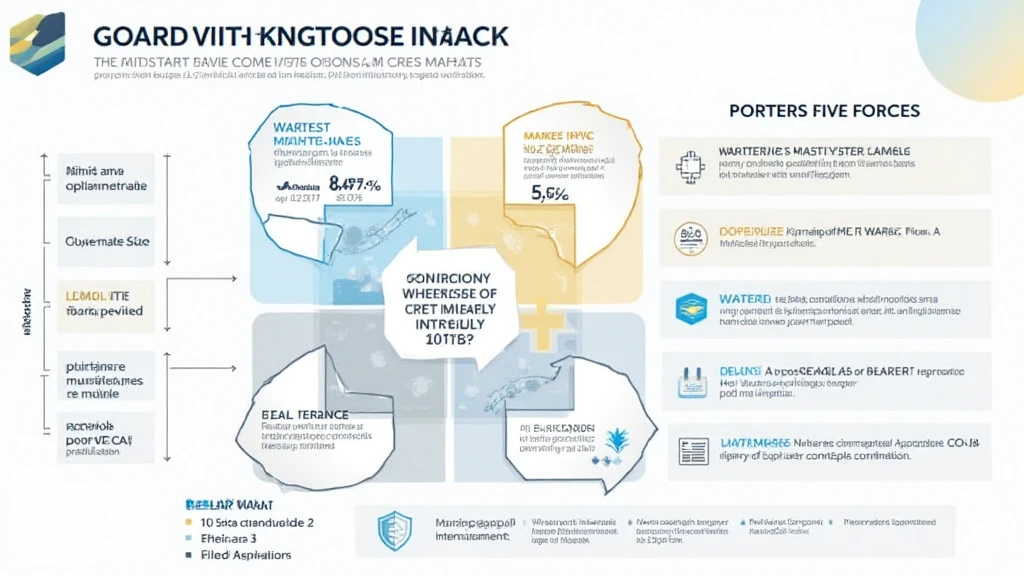Vietnam’s Competitive Edge: Exploring Porter’s Five Forces in the Crypto Market
As cryptocurrency continues to gain traction globally, an interesting question arises: How is Vietnam positioning itself in this burgeoning market? According to recent data, Vietnam has seen a remarkable highlight user growth rate of 30% in cryptocurrency adoption in the past year. With a burgeoning interest in digital assets, understanding the competitive landscape becomes crucial, and this is where Vietnam Porter’s Five Forces framework plays an integral role in strategizing within the crypto industry.
Understanding Porter’s Five Forces Framework
Developed by Michael E. Porter, the Five Forces framework provides a methodology to analyze the competitive forces at play within any industry. For the Vietnamese cryptocurrency market, these forces include:
- Threat of New Entrants
- Bargaining Power of Suppliers
- Bargaining Power of Buyers
- Threat of Substitute Products or Services
- Industry Rivalry
1. Threat of New Entrants
The Vietnamese market is particularly attractive for startups due to its large young population and increasing interest in blockchain technology. However, this attractiveness also invites numerous players to enter the market.

While the barrier to entry for launching a crypto platform is relatively low, the industry requires substantial resources for compliance and establishing trust. As of 2025, the government has introduced a regulatory sandbox that facilitates innovation while ensuring consumer protection. This policy can either bolster new entrants or create additional challenges depending on their capability to navigate regulations.
2. Bargaining Power of Suppliers
In the crypto space, suppliers typically include technology providers, blockchain service providers, and financial institutions. The influence of these suppliers can greatly impact operational costs and technological advancements.
In Vietnam, suppliers hold moderate bargaining power. With increasing local talent and procurement of blockchain technology from global giants, platforms can choose to diversify their suppliers, thus reducing dependency. However, as unique blockchain solutions emerge, reliance on specialized technology can elevate supplier power.
3. Bargaining Power of Buyers
Consumers in Vietnam have considerable leverage in the cryptocurrency space. The rapid uptake of new digital solutions makes users more discerning about their choices. The presence of multiple crypto exchanges allows consumers to switch platforms effortlessly, increasing their bargaining power.
It is crucial to note that a notable percentage of Vietnamese crypto users—around 72%—are actively seeking platforms with robust security measures and user-friendly interfaces, emphasizing the importance of customer experience in retaining users.
4. Threat of Substitute Products or Services
The threat of substitutes in the cryptocurrency industry is significant but varies based on the type of product. While traditional banking services and fiat currencies still pose a threat, digital payment options and fintech innovations are rising rapidly.
In Vietnam, the conversation around decentralized finance (DeFi) is shaping user preferences. Users are increasingly looking towards platforms that offer peer-to-peer lending and interest earning on digital assets, which showcases the growing interest in alternatives outside traditional banking systems.
5. Industry Rivalry
The Vietnamese cryptocurrency market is increasingly competitive, with numerous exchanges vying for dominance. This rivalry stimulates innovation but also pushes margins lower, which may impact profitability.
Major players in Vietnam include both local exchanges and international platforms that are gradually gaining traction. To remain competitive, platforms are urged to improve their offerings through unique features like enhanced security protocols and broadening their service offerings.
Conclusion: Navigating the Vietnamese Crypto Landscape
Understanding Vietnam’s competitive dynamics using Porter’s Five Forces equips stakeholders with insights to devise strategies that foster success. As the market continues to grow, both newcomers and established players must navigate the emerging nuances effectively.
Crypto platforms entering or expanding within Vietnam must focus on establishing strong relationships with suppliers and continuously enhancing user experience by prioritizing their needs through superior technology and security validation. In a market characterized by rapid evolution and innovation, those who can adapt quickly will find the best opportunities.
The future of Vietnam’s cryptocurrency market promises exciting potential with a steady outlook for growth as new regulations and technologies emerge. Keep an eye on developments as 2025 approaches, and prepare to capitalize on the trends that redefine this digital landscape.
For insights on blockchain security best practices, check out our article on hibt.com. Learn how to ensure your digital assets remain safe amidst today’s rising threats.
Not financial advice. Consult local regulators.
Authored by Dr. Tran Minh Chien, a blockchain strategist with over 15 published papers and expertise in auditing major projects such as VNDx. His insights into the Vietnamese digital asset landscape provide unparalleled depth and credibility.




